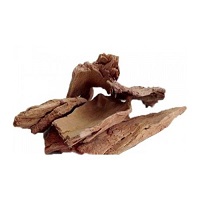Phytochemical Screening and Toxicity Study of Saraca asoca Bark Methanolic Extract
Keywords:
Saraca asoca, acute and sub acute toxicity, bark extract, toxicity profileAbstract
The study was conducted to screen for the phytochemicals constituents of bark of Saraca asoca (Roxb.), one of the folk medicinal plants found in West Bengal, Bangladesh and Sri Lanka. The acute and sub- acute toxicity of methanolic extract of S. asoca bark on mice was studied. Phytochemical analysis of S. asoca (bark) methanolic extract revealed the presence of high percentage of flavonoids and reducing sugar in addition with saponins, glycosides, steroids, anthraquinones and volatile oil. In mice, daily single oral doses of S. asoca methanolic extract (0.3 and 1.2 g/Kg body weight) were well tolerated and no adverse behavioral effect was found as used for 30 days (LD50=6.526 g/Kg for acute administration) and induced no significant changes in body and organs weights. However, hematological parameters showed a significant decrease in platelet count (432±98.3, p<0.05) when the dose is 1.2 g/Kg body weight in relation to control animals, suggesting disturbances in platelet production whereas no effect was found on serum biochemical parameters like serum glutamate oxaloacetate transaminase (SGOT), serum glutamate pyruvate transaminase (SGPT), serum alkaline phosphatase (ALP), and bilirubin, total protein, uric acid, urea, creatinin. This study indicates that Saraca asoca is nontoxic for both acute and sub-acute oral administrations.
References
Cowan MM. Plant Products as antimicrobial
agents. Clin. Microbiol Rev. 1999;12:564-82.
Atawodi SE. Antioxidant potentials of African
plants. Afr. J. Biotechnol. 2005;4(2):128-133.
Sofowora A. Medicinal plants and traditional
medicine. John Wiley & Sons. 1991;pp. 66-79.
Ghani A. Medicinal plants of Bangladesh with
chemical constituents and uses. (2nd edn).
Asiatic Society of Bangladesh: Dhaka 2003.
Nadkarni AK, Nadkarni KM. Indiam Materia
Medica (ed). Popular Prakashan-Bombay;
India 2005.
Sadhu SK, Khatun A, Phattanawasin P and
Masami Ishibashi TO. Lignan glycosides and
flavonoids from Saraca asoca with antioxidant
activity J Nat Med. 2007;61:480-482.
Pradhan P, Joseph L, Gupta V, Chulet R, Arya
H, Verma R, Bajpai A. Saraca asoca (Ashoka):
A Review. Journal of Chemical and
Pharmaceutical Research. 2009;1(1):62-71.
Parekh J, Jadeja D, Chanda S. Efficacy of
Aqueous and Methanol Extracts of Some
Medicinal Plants for Potential Antibacterial
Activity. Turk. J. Biol. 2005;29:203-210.
Sofowora A. Medicinal Plants and Traditional
Medicine in Africa(ed). Spectrum Books
Limited: Nigeria, 1993;151-153.
Trease G, Evans WC. Textbook of
Pharmacognosy. (12th edn). Balliere-Tindall:
London 1983.
Morpugo C. A new design for the screening of
CNS active drugs in mice. Arzneim. Forsch.
;11:1727-1734.
Sharma V, Pandey D. Beneficial Effects of
Tinospora cordifolia on Blood Profiles in Male
Mice Exposed to Lead. Toxicol Int.
;17(1):8–11.
Kasolo JN, Bimenya GS, Ojok L and Ogwalokeng JW. Phytochemicals and acute toxicity
of Moringa oleifera roots in mice. Journal of
Pharmacognosy and Phytotherapy,
;3(3):38-42.
Saad B, Azaizeh H, Abu-Hijleh G, Said S.
Safety of traditional Arab herbal medicine.
Evidence-based Complementary and
Alternative Medicine, 2006;3:433–439.
Springfield EP, Eagles PKF, Scott G. Quality
assessment of South African herbal medicines
by means of HPLC fingerprinting. Journal of
Ethnopharmacology, 2005, 101, 75–83.
Raza M, Al-Shabanah OA, El-Hadiyah TM and
Al-Majed AA. Effect of prolonged vigabatrin
treatment on haematological and biochemical
parameters in plasma, liver and kidney of
Swiss albino mice. Sci. Pharmaceut.
;70:135-145.
Mukinda JT, Syce JA. Acute and chronic
toxicity of the aqueous extract of Artemisia
afra in rodents. Journal of
Ethnopharmacology, 2007;112:138–144.
Guerrero JA, Lozano ML, Castillo J,
Benavente-García O, Vicente V, Rivera J.
Flavonoids inhibit platelet function through
binding to the thromboxane A2 receptor J
Thromb Haemost, 2005;3(2):369-76.
Miyuki F, Hironori T, Motohiko N, Toshiyuki T,
Ken-ichi N, Munekazu I. Anti-platelet and
membrane rigidifying flavonoids in brownish
scale of onion Journal of health science.
;49(6):475-480.
Wright B, Moraes LA, Kemp CF, Mullen W,
Crozier A, Lovegrove JA, Gibbins JM. A
structural basis for the inhibition of collagenstimulated platelet function by quercetin and
structurally related flavonoids. Br J Pharmacol,
;159(6):1312-25.
Loomis TA, Hayes AW. Loomis’s Essentials of
Toxicology (ed). Academic Press: California,
;208–245.
Miller LC, Tainter ML. Estimation of LD50 and
its error by means of log-probit graph paper,
Proc Soc Exp Bio Med, 1944;57:261.



